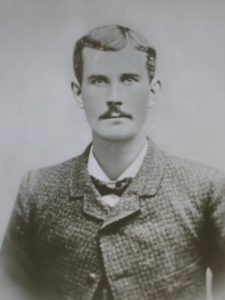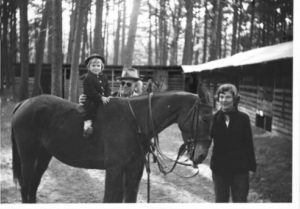I’ve been organizing my files, a project I undertake whenever I’m overcome by guilt re: the mess I will leave behind if I’m hit by a bus. I persevere at this Sisyphean task until something mercifully diverts me.
Sorting through random paper yesterday, I ran across information I had collected on a colonial Holland family of Goochland, Hanover, and Amelia Counties, Virginia. My cryptic and somewhat snarky note about them implied that Winn researchers had not noticed the connection between these Hollands and the well-known Winn families of Hanover/Amelia/Lunenburg. I penned that note a couple of decades ago and it is probably no longer true, if it ever was. But it got me out of organizing my files to write this post, for which I am grateful.
The Winn context here is provided by Richard and Phoebe Wilkes Pledger Winn of Hanover County, Virginia. Richard’s family of origin is the subject of much speculation but no apparent evidence. He died about 1750. There is no extant will for him in Hanover, although he probably had one.[1] He did, however, own land and enslaved people located in Amelia which provided an essential link to establishing Richard and Phoebe’s family. Five children — there might be others — are established by excellent circumstantial evidence. I consider them all proved, although you might disagree.[2] I described the evidence in this article, so you may judge for yourself:
Here is a refresher on Richard and Phoebe’s five proved children, birth order unknown, just in case you’re new to them or have forgotten:
- Col. John Winn of Amelia County, whose wife was Susannah Irby, daughter of Charles Irby Senior. Col. John died in Amelia in 1781, leaving a will naming his children Richard, Jane, Charles, John, and Susannah.[3]
- Col. Thomas Winn of Lunenburg County, who was married twice. His first wife is usually identified as a Miss Bannister, although the only evidence I know is that the couple named a son Bannister Winn. Col. Thomas’s second wife and widow was Sarah, a genuine character who was almost certainly née Bacon.[4] Col. Thomas died in Lunenburg, also in 1781. His eleven children — including which ones were Miss Bannister’s and which were Sarah’s — are conclusively proved by a fabulous chancery lawsuit in Lunenburg.[5] I explained the lawsuit in this article.
- Daniel Winn, also of Lunenburg. His wife was probably Sarah Tench, about whom I know nothing except that she was a daughter of Henry Tench. Daniel died in Lunenburg in 1799 leaving nine sons and one daughter. His will named only his son Joseph, although his other children are established by gift deeds and a web of other convincing evidence.[6] His children are identified and the evidence concerning them described in this post.
- Susanna Winn, who married John Irby (also a child of Charles Irby Sr.) in Amelia in 1757. John Irby died in 1763, and his will identifies their young children as Charles, Lucey, and John Irby.[7] Susannah and two of the Irby children witnessed her brother Col. Thomas’s Lunenburg will.
- Phoebe Winn. And here, at last, is the Winn-Holland connection. Phoebe’s husband was Michael Holland Jr., son of Michael Holland Sr. of Hanover and Goochland Counties. Michael Jr. died in Amelia County in late 1762 or early 1763. Their only proved children were Joseph and Mary Holland. Both were established by a deposition concerning Michael’s estate.[8] Joseph is also proved in a deed in which he sold some of his father’s land. His mother Phoebe, identified as such in the deed, released her dower interest.[9]
And with that, I will add a brief chart for the family of Michael Holland Sr. of Hanover and Goochland, along with a few notes which (I hope) will help you track these guys if you wish.
See you on down the road.
Robin
1 Michael Holland Sr., wife Judith _______. They apparently lived in Hanover, although a will was probated in Goochland.[10] He amassed an enormous amount of land in Louisa, Goochland, and Hanover Counties, much of it on Licking Hole or Lickinghole Swamp or Creek. He died in early 1746/47.
2 John Holland, inherited 800 acres on Lickinghole. Died in 1773. Wife Martha _______. Seven children are named in his Goochland will.[11]
3 John Holland, b. by Oct 1746
3 Judith Holland Parish
3 Hezekiah Holland
3 Martha Holland Graves
3 Nathaniel Holland, inherited land on Little Bird Cr. in Goochland.
3 Lucy Holland
3 Alice Holland Nash
2 Michael Holland Jr., inherited 400 acres in Louisa Co. Born about 1695. Was in Goochland Co. in Aug 1752 when he bought 865 acres from Philip Pledger. Was in Nottoway Parish, Amelia Co., by 28 Mar 1755, when he sold some of that tract. Died in the 4th quarter of 1762 in Amelia County. His wife was Phoebe Winn, sister of Col. John of Amelia, Col. Thomas of Lunenburg, Daniel Winn of Lunenburg, and Susannah Winn Irby of Amelia.
3 Joseph Holland
3 Mary Holland
2 Elizabeth Holland m. Pouncy Anderson; he inherited several tracts from his father-in-law.
2 Richard Holland, inherited a plantation in Louisa Co. and “Meridith’s Branch” in Henrico, where he lived as of Oct 1746, probably 500 acres and 450 acres, respectively.
2 George Holland, inherited 700 acres in Louisa Co., plus another 650 acres, location uncertain. Wife Sarah Ford, daughter of William Ford. Michael Sr. had to leave this large legacy to George Holland to assure that Mr. Ford would give Sarah a legacy.
2 Judith Holland m. Henry Martin, inherited 520 acres on Lickinghole plus 50 acres in Hanover a half-mile below the plantation where Michael Holland Sr. lived.
2 Anne Holland, under age in Oct 1746.
2 Susannah Holland, under age in Oct 1746.
2 Mercy Holland, under age in Oct 1746.
[1] There are few Hanover Co. records prior to 1865.
[2] Professional genealogical proof standards are relaxed somewhat when burned records result in the loss of primary conclusive evidence, such as Hanover County wills.
[3] Amelia Co., VA Will Book 2: 360. Will of John Winn of Amelia County dated 3 Mar 1780, proved 25 Jan 1781. Daughter Susanna when she reaches age 18 or marries, 7 slaves of equal value to those given daughter Jane Epes before her marriage. Son Richard Winn, 2 years after my death, 2 slaves (for support of wife until delivery). Wife Susanna, possession of dwelling house and sufficient maintenance out of my estate. Sons John and Charles Winn, remainder of my estate divided equally 1 year after death. Wife Susanna Winn, executrix, and Truman Epes and Charles Winn, executors. Witnesses: Giles Nance, John Irby, William Gooch, Elisha Winn, Joseph Winn, and Jane Epes. Charles and John qualified as executors.
[4] Lunenburg Co., VA Deed Book 25: 82, agreement dated 16 Mar 1820 between Edmund Winn (son and executor of Col. Thomas), Sarah Winn (Col. Thomas’s widow), and John Winn Jr. providing that Edmund would build a house for John Jr. on land where Edmund lives. The land belonged to Edmund’s mother Sarah for her lifetime, then descended to Bannister Winn, a son of Col. Thomas. However, John Jr. had bought the remainder interest in the land from Bannister Winn’s heirs. Edmund and his mother Sarah agreed not to deprive John Jr. of use of a certain part of the said tract. Edmund was expressly not bound for his mother’s conduct, only his own. I’m not sure who “John Jr.” is, probably either the son of John Winn m. Ann Stone or the son of Daniel.
[5] Col. Thomas Winn’s children by his first wife were Mourning, Elizabeth, Thomas, Richard, William, Bannister, and John Winn (who predeceased his father). His children by Sarah Bacon were Keturah, Henrietta Maria (AKA Marie), Edmund, and Washington.
[6] Lunenburg Co., VA Will Book 4: 264, will of Daniel Winn dated 23 Apr 1789, proved 14 Feb 1799. After payment of debts, remaining estate to son Joseph, other children already provided for. Daniel’s children were Marticia (wife of Cornelius Crenshaw Jr.), Joseph, John, Thomas, Elisha, Alexander, Orsamus, William, James, and Galanus.
[7] Amelia Co., VA Will Book 2X: 45, will of John Irby dated 28 Jan and proved 27 Oct 1763. Witnesses Thomas Wilkinson, William Fitzgerald, Mary Irby, and Henrietta Maria Irby. Executors Susannah Irby, “her brother John Winn,” and my brother Charles Irby. Wife Susanna Irby, 15 slaves and personal estate until the eldest child is 21 or wife remarries, then an equal division between my wife and children Charles Irby, Lucey Irby, and John Irby. Sons John and Charles, 560-acre tract where I live divided equally when son Charles comes of age or marries. Wife to have manor house and 1/3rd of land for life.
[8] The deposition suggests that Michael Holland may have had more than two children, although I can only prove two.Amelia Co., VA Deed Book 8: 314, deposition signed 3 Jan 1764 by John Nance repeating Michael Holland’s stated intent to give his daughter Mary two enslaved women and his son Joseph two enslaved men, and identifying Michael Holland’s wife’s brother as Mr. Winn. Holland also said his family was so large that he “wished his children could go for themselves.”
[9] Amelia Co., VA Deed Book 9: 105, deed dated 26 Feb 1767 from Joseph Holland of Nottoway Parish, Amelia, to Charles Irby, same, 118 acres in Raleigh Parish adjacent Winn’s line et al. Phoebe, the mother of Joseph Holland, released dower.
[10] Michael Sr.’s Hanover will, if any, is probably lost. Benjamin B. Weisiger, III, Goochland County, Virginia Wills and Deeds 1742-1749 (Richmond: 1984) 222, will of Michael Holland dated 10 Oct 1746, proved 17 Mar 1746/47. Wife Judith, 800 acres in Louisa County and 800 acres on Lickinghole Cr. Son John Holland, 800 acres on Lickinghole. Son Michael, 400 acres in Louisa bought from Craddock. Son-in-law Pouncy Anderson, 900 acres on Lickinghole and 200A bought from William Owen and other land. Son Richard, the plantation in Louisa County and “Meridith’s Branch” in Henrico where he now lives, 500 acres and 450 acres. Son George, 700 acres in Louisa County and other land. Son-in-law Henry Martin, 520 acres on Lickinghole plus 50 acres in Hanover, 1/2 mile below the plantation where Michael Sr. lived. Daughters Anne, Susannah and Mercy when of age or married. Daughters Elizabeth Anderson and Judith Martin. Grandson John Holland, the son of John, 500 acres in Orange County. Executors Henry Martin, Pouncy Anderson and Richard Holland. Witness John Martin, John Parrish, John Sandland.
[11] Goochland Deed & Will Book 10: 378, will of John Holland dated 7 Jun and proved Sep 1773. Wife Martha. Children John Holland, Judith Parish, Hezikiah Holland (female), Martha Graves, Nathaniel Holland, Lucy Holland, and Alice Nash. Son Nathaniel inherited land on Little Bird Cr.








